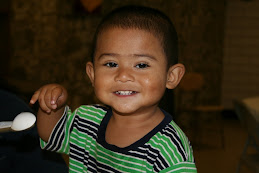Below is an op-ed piece that appeared in the Lubbock Avalanche Journal on Sunday, March 25. It is a follow-up on the results of "Hunger in America, 2006," a nation wide look a hunger. The Study was conducted by America's Second Harvest, the Nations Food Bank Network. As a member of Second Harvest, the South Plains Food Bank participated in the study.
Hunger on the South Plains, 2006
How would you define the American Dream? For most folks, “The American Dream” revolves around opportunity and self-sufficiency, the ability to be in control of our destiny, the ability to provide for one’s self and one’s family. Fundamental to our dream is economic security.
For most Americans, economic security means being able to afford and save for big dreams — a vacation, new car, a house, or college tuition for the kids. For a startlingly high and growing number of our neighbors, however, economic security means meeting much more basic dreams and needs – such as a regular supply of groceries.
What’s so disquieting about these starkly contrasting experiences of people within every one of our communities in the United States is the scale; according to the results of a new major study by America’s Second Harvest —The Nation’s Food Bank Network, more than 25 million people rely on emergency food assistance through the America’s Second Harvest Network in order to make ends meet. That represents eight percent more people than in 2001, when America’s Second Harvest last studied those seeking emergency food assistance from its Network of 45,000 emergency food distribution agencies.
Locally, more than 90,000 individuals across the South Plains were helped last year by the South Plains Food Bank and our network of churches and social service agencies. In that number are 22,000 children and 12,000 seniors. Many of the 90,000 people we serve – about 33% -- come from households with at least one working, wage-earning adult. And as much as one-third or more are forced to make agonizing choices between eating and basic necessities, like heat, rent or medical care.
The study, Hunger in America 2006, which is the largest, most comprehensive study ever conducted on the charitable emergency food distribution system in the United States, also showed that hunger does not discriminate. It is present in every one of our communities around the country – small and large, urban, suburban and rural. It is present on the South Plains. Of the 90,000 neighbors in our region receiving emergency food assistance from the South Plains Food Bank network, 28 percent are white; 19 percent are African American; and 45 percent are Hispanic.
The solutions to ending hunger on the South Plains are within reach. But we must take proper steps to seize them. Our compassion is unlimited, but our resources are not. That is the reality we have to face. So how can we leverage our resources?
The federal government plays a decidedly critical role in providing food for low-income Americans. Thirty-five percent of the clients in the America’s Second Harvest Network report that they are enrolled in the Food Stamp Program and the majority of children in households seeking emergency food assistance are enrolled in the National School Breakfast program and School Lunch Program.
That’s good news. But, even as this nation approaches record levels of participation in the Food Stamp Program and our charitable emergency food distribution network delivers more food than ever before, clearly what we’re doing as a nation to address hunger is not enough.
We need to make sure that every person who qualifies for existing public benefits knows about them and gets them. Our study shows that fewer than 4 million of the 25 million people we serve receive these benefits.
We also need Congress and the Administration to protect the federal safety-net nutrition programs, including the Food Stamp Program, the Commodity Supplemental Food Program, and Women, Infants and Children, as it considers the reauthorization of the 2007 Farm Bill.
Every American can join the hunger movement in their community by being engaged with the South Plains Food Bank and its agencies through giving time, food or a financial donation. Voluntary support is critical to service delivery: about 75 percent of food pantries and 65 percent of our soup kitchens rely entirely on volunteers and have no paid staff. While it is no secret that our society relies heavily upon the charitable sector to ensure that none of our neighbors go to bed hungry, the critical role that volunteers play in making this process happen is often overlooked.
“What amount of hunger is acceptable in our community?” you may ask. The answer of course is “No amount.”
We know we may never succeed in wiping out hunger completely – but we truly fail only when we stop dreaming and stop trying.
Subscribe to:
Post Comments (Atom)

No comments:
Post a Comment